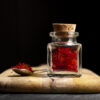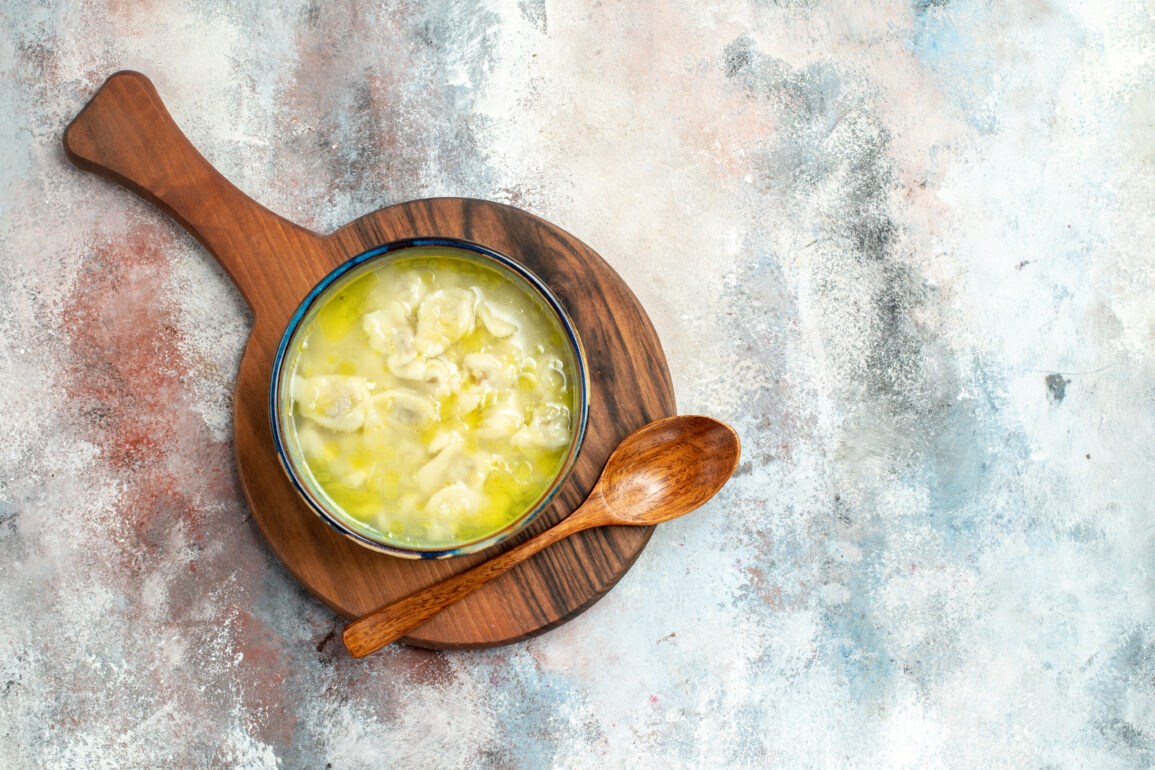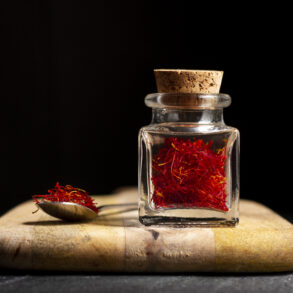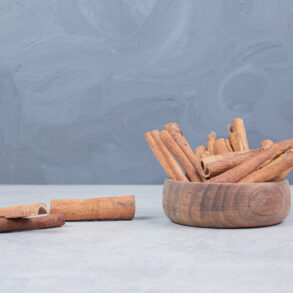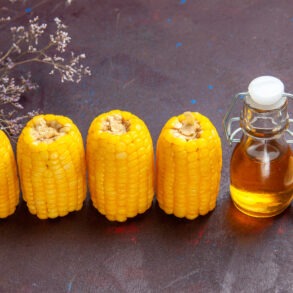When it comes to skincare, we’re all in search of that one magical ingredient that can transform our skin into something soft, radiant, and naturally glowing. For many, the answer doesn’t lie in luxury serums or high-end creams but in a humble jar of golden ghee. Yes, Ghee for Skin Texture is the clarified butter found in every Indian kitchen, is more than just a cooking staple it’s an ancient skin elixir that’s been trusted for centuries.
If your skin feels rough, flaky, or lacks radiance, ghee could be your new best friend. Thanks to its rich nutrient profile and deep moisturizing abilities, it works wonders on your skin’s texture — giving it that healthy, youthful bounce. This article will explore every aspect of using ghee for improving skin texture, including its benefits, DIY remedies, expert opinions, and even some myths debunked.
Introduction to Ghee and Its Beauty Legacy
What is Ghee?
Ghee is clarified butter that has had its milk solids removed through a slow-cooking process. What’s left behind is a golden, fragrant fat that’s incredibly rich in nutrients. Used in Ayurvedic medicine for thousands of years, ghee is considered sattvic (pure) and beneficial not only for digestion but also for skin health.
Unlike regular butter, ghee doesn’t contain lactose or casein, making it suitable for those with dairy sensitivities. It’s made by simmering butter until the water content evaporates and milk solids separate, leaving behind a pure form of butterfat that’s shelf-stable and highly versatile.
On a molecular level, ghee is composed of saturated fats, omega-3 and omega-9 fatty acids, and a cocktail of vitamins — particularly Vitamin A, D, E, and K. These components are the secret sauce when it comes to skin rejuvenation and texture improvement.
Historical Use of Ghee in Skincare Across Cultures
Ghee has been a part of traditional Indian and South Asian skincare rituals for generations. In Ayurveda, the ancient Indian system of medicine, ghee is believed to balance the doshas (Vata, Pitta, and Kapha) and promote healing from the inside out. It has been used in “Abhyanga” (oil massage rituals) and in treatments for dry, cracked skin, burns, and even wounds.
In Middle Eastern and Persian cultures, ghee or similar clarified butters were applied as moisturizers in dry, arid climates. African tribes also used similar rendered fats to protect and smooth their skin in harsh desert conditions.
Today, with the rise of clean beauty and natural skincare trends, ghee is getting the spotlight it deserves in the modern world. From kitchen shelves to bathroom vanities, this age-old ingredient is making a huge comeback.
Why Modern Skincare is Turning Back to Ghee
In an era where skincare has become dominated by lab-synthesized products and complicated routines, there’s a noticeable shift toward simple, organic, and chemical-free alternatives. Ghee fits perfectly into this movement. It’s a one-ingredient wonder that moisturizes, nourishes, heals, and enhances — without the need for parabens, sulfates, or preservatives.
Moreover, ghee is biocompatible, which means it works in harmony with your skin rather than fighting against it. It doesn’t strip your skin of its natural oils. Instead, it enhances the skin barrier, making it an excellent choice for those with sensitive or reactive skin.
The Nutritional and Chemical Profile of Ghee
Key Vitamins and Nutrients in Ghee
Here’s what makes ghee a skincare powerhouse:
| Nutrient | Role in Skin Health |
|---|---|
| Vitamin A | Encourages healthy skin cell production |
| Vitamin D | Enhances skin tone and repairs sun damage |
| Vitamin E | Fights free radicals and prevents aging |
| Vitamin K | Reduces dark spots and scars |
| Omega Fatty Acids | Moisturize and protect the skin barrier |
Ghee also contains butyrate, a short-chain fatty acid known for its anti-inflammatory properties, which makes it a soothing option for irritated skin conditions like eczema and rosacea.
Fatty Acid Composition and Its Skin Benefits
Ghee is predominantly made up of saturated fats (about 62%), followed by monounsaturated fats and a smaller portion of polyunsaturated fats. Here’s why that matters:
- Saturated fats: Deeply nourish and provide a protective layer.
- Monounsaturated fats: Penetrate deep into the skin, improving hydration and elasticity.
- Omega-3s and Omega-9s: Calm inflammation and promote skin regeneration.
This unique fat composition makes ghee a perfect topical treatment for dry, aging, and textured skin.
How Ghee Interacts with the Skin’s Natural Barrier
The outermost layer of your skin, the stratum corneum, is composed of dead skin cells and natural lipids that form a protective barrier. Ghee enhances this barrier by mimicking the lipids already present in your skin, allowing it to seal in moisture and keep environmental pollutants out.
By reinforcing this barrier, ghee reduces trans-epidermal water loss, which is often the primary culprit behind dry and rough skin textures.
How Ghee Improves Skin Texture
Hydration and Moisture Retention
Ghee is an occlusive agent, meaning it traps moisture within the skin layers without clogging pores. This makes it especially effective during harsh winters or in arid climates where skin tends to lose moisture rapidly.
If your skin feels tight or flaky after washing, applying a thin layer of ghee can instantly relieve dryness. It penetrates deep into the skin, unlike water-based moisturizers that sit on top of the surface. This deep nourishment helps plump up skin cells, resulting in smoother texture and a more youthful appearance.
Over time, this consistent hydration leads to improved skin elasticity and reduced visibility of fine lines or rough patches.
Skin Smoothing and Softening Effects
One of the most immediate effects of using ghee is how soft and smooth your skin feels afterward. The emollient nature of ghee fills in the tiny gaps between skin cells, creating a surface that feels velvety to the touch.
Ghee also contains small amounts of natural exfoliants, like retinoids (derived from Vitamin A), which encourage gentle cell turnover. This means dead skin cells are sloughed off more efficiently, revealing a fresher and more even-toned skin beneath.
Additionally, the consistent use of ghee reduces rough textures often caused by dehydration, sun damage, or skin conditions like keratosis pilaris.
Healing Properties for Damaged or Dull Skin
If your skin has been damaged by sun exposure, acne scars, or environmental stressors, ghee can be a restorative balm. The antioxidants in ghee combat oxidative stress, which is a major factor in skin aging and textural issues.
Moreover, ghee’s anti-inflammatory properties calm redness and swelling, while its antimicrobial compounds help prevent infections in minor cuts or inflamed areas. This combination of soothing, repairing, and protecting makes ghee an ideal remedy for dull, tired-looking skin.
Different Ways to Use Ghee on Skin
Pure Ghee Application
Sometimes, the simplest methods are the most effective. Applying pure ghee directly to your skin is the most basic and powerful way to experience its benefits. All you need is a small amount — just a pea-sized drop — gently massaged into the skin.
You can warm it slightly before use, which allows for better absorption and a spa-like experience. Many people prefer to apply it at night, allowing the ghee to work its magic while the skin regenerates during sleep. In the morning, you’ll wake up with a noticeably softer, more supple complexion.
Here’s how you can do it:
- Wash your face with a gentle cleanser.
- Pat dry and let the skin remain slightly damp.
- Take a tiny amount of ghee and rub between your fingers to warm it.
- Massage onto face in upward circular motions.
- Leave it on overnight or wipe off excess if desired.
This technique works wonders for dry patches, under-eye dryness, or even lips. Over time, consistent use helps fade scars, lighten pigmentation, and even out texture.
Ghee Face Masks Recipes
Face masks infused with ghee are a powerful way to combine its properties with other nourishing ingredients. These masks can target specific issues like dullness, uneven texture, or inflammation.
1. Ghee & Honey Mask (for softness & glow)
- 1 tsp ghee
- 1 tsp raw honey
- Few drops of rose water
Mix all ingredients and apply to the face. Leave for 20–30 minutes and rinse with lukewarm water. This mask hydrates and rejuvenates, leaving skin baby-soft and radiant.
2. Ghee & Turmeric Mask (for pigmentation & texture)
- 1 tsp ghee
- 1/4 tsp turmeric
- 1 tsp chickpea flour
- 1 tsp milk
This Ayurvedic blend helps reduce spots and smooth out rough areas. Use once a week for best results.
3. Ghee & Aloe Vera Mask (for inflammation)
- 1 tsp ghee
- 1 tsp aloe vera gel
- 2 drops of tea tree oil (optional)
This mask is excellent for soothing irritated or acne-prone skin while helping with texture refinement.
Ghee with Other Natural Ingredients (Honey, Turmeric, etc.)
Combining ghee with time-tested natural ingredients can amplify its effects. Here’s a breakdown of effective combinations:
| Ingredient | Effect When Mixed with Ghee |
|---|---|
| Honey | Deep hydration and anti-bacterial properties |
| Turmeric | Brightens skin and reduces pigmentation |
| Aloe Vera | Calms redness and boosts healing |
| Sandalwood | Cools and tightens pores |
| Rose Water | Adds fragrance and enhances glow |
These combinations are not just remedies — they’re rituals. They help slow you down, pamper your skin, and restore both mind and body. Whether it’s a five-minute mask or an overnight spot treatment, integrating ghee into these blends brings a whole new level of nourishment to your skin texture.
Skin Types and Suitability
Is Ghee Suitable for Oily Skin?
One of the most common concerns people have is: “Won’t ghee clog my pores?” Surprisingly, the answer is no — if used correctly. Ghee has a comedogenic rating of 2, which means it’s moderately unlikely to clog pores compared to heavier oils like coconut oil.
However, if you have oily or acne-prone skin, the key lies in moderation. Here’s how you can safely use ghee without aggravating your skin:
- Use it once or twice a week, not daily.
- Apply only a thin layer.
- Combine with non-comedogenic ingredients like aloe vera.
- Avoid using ghee over active breakouts.
It’s best to conduct a patch test before full application. Apply ghee behind the ear or under the jawline and wait 24 hours to check for any reaction.
Many people with oily skin notice that after regular ghee use, their oil production stabilizes, and skin texture becomes more even and smooth.
How Dry and Sensitive Skin Reacts to Ghee
Ghee for Skin Texture will help in Dry and sensitive skin types absolutely thrive on ghee. Its rich, fatty acid profile deeply nourishes without irritating. In fact, ghee is often recommended for:
- Flaky, peeling skin
- Red, inflamed patches
- Winter dryness or seasonal eczema
Its soothing properties make it ideal for reducing sensitivity over time, building up skin tolerance, and enhancing overall texture.
To maximize results, apply ghee:
- Immediately after a warm shower
- Over a hydrating serum
- Before bed as an overnight mask
It locks in moisture and promotes skin regeneration, resulting in visibly smoother, less reactive skin by morning.
Patch Test and Allergy Considerations
Ghee for Skin Texture is generally safe for most skin types, allergies can occur, especially for those with severe dairy sensitivities. To stay safe:
- Conduct a patch test as mentioned above.
- Ensure your ghee is pure and free from additives.
- If you notice breakouts, rash, or irritation, discontinue use and consult a dermatologist.
Those with nut or dairy allergies should be particularly cautious and might want to opt for plant-based alternatives like shea butter if issues arise.
Benefits of Ghee for Skin Texture
Enhanced Elasticity and Suppleness
One of the hallmarks of healthy, youthful skin is elasticity. Skin that snaps back into place and feels firm yet soft is a sign of good hydration and collagen health. Ghee helps support this through:
- Vitamin E: Protects collagen fibers from oxidative stress.
- Omega fatty acids: Reinforce the skin barrier and prevent sagging.
- Vitamin K: Improves skin tone and elasticity.
Regular ghee application encourages firmer, plumper skin, making it a powerful natural remedy for early signs of aging or sun damage.
Reduced Flakiness and Roughness
Ghee for Skin Texture help in Dry, rough patches? Ghee can fix that fast.
Its emollient properties allow it to penetrate the skin’s upper layers, healing cracks and filling in flaky areas. Unlike water-based lotions that evaporate quickly, ghee stays on the skin longer, ensuring continuous hydration.
Ghee for Skin Texture – Areas like elbows, knees, or even cheeks in winter ghee works like a charm. Use it daily for 2–3 weeks and you’ll notice significantly reduced roughness and flakiness.
Natural Glow and Radiance
Ghee for Skin Texture has a unique ability to bring out your skin’s natural glow. This isn’t just anecdotal it’s a result of:
- Increased blood circulation from massage
- Cell turnover stimulated by Vitamin A
- Deep hydration that improves light reflection on the skin
Ghee for Skin Texture use in highlighters or makeup-based luminizers, ghee gives a glow that’s from within real, healthy, and lasting. Regular use even reduces dullness and fatigue from pollution or screen exposure.
Ghee for Skin Texture vs. Commercial Moisturizers
Ingredient Comparison
Let’s break down the difference between ghee and a typical drugstore moisturizer:
| Aspect | Ghee | Commercial Moisturizer |
|---|---|---|
| Ingredients | 100% Natural | Chemicals, emulsifiers |
| Moisture Retention | High | Moderate |
| Additives | None | Fragrances, alcohol, preservatives |
| Long-term Benefits | Improves texture, heals skin | Temporary hydration |
| Price | Affordable (homemade) | Often expensive |
Clearly, ghee wins when it comes to purity, affordability, and long-term benefits.
Long-term Effects on Ghee for Skin Texture
Many moisturizers offer quick relief but no healing, whereas ghee gradually transforms skin quality over time. It strengthens the skin barrier, balances oil production, and even reduces the need for daily moisturizer with consistent use.
Ghee doesn’t just hydrate — it nourishes.
Cost and Accessibility in Ghee for Skin Texture
Let’s not forget, ghee is budget-friendly and easily available. A single jar can last months and has multiple uses — from cooking to skin to hair care.
Commercial products often require a separate cream for every concern (hydration, wrinkles, glow), but ghee covers it all — at a fraction of the price.
Table 1: Nutritional Components of Ghee for Skin Texture & Their Skin Benefits
| Nutrient | Presence in Ghee | Function in Skincare |
|---|---|---|
| Vitamin A | High | Stimulates cell turnover, smooths texture, improves tone |
| Vitamin E | High | Antioxidant, slows aging, heals scars, adds glow |
| Vitamin K | Moderate | Reduces dark spots, improves elasticity, aids wound healing |
| Omega-3 Fatty Acids | Moderate | Anti-inflammatory, soothes irritation, hydrates skin layers |
| Omega-9 Fatty Acids | High | Softens skin, prevents moisture loss, strengthens skin barrier |
| Butyric Acid | Unique to ghee | Calms eczema/psoriasis, promotes healing |
| Conjugated Linoleic Acid (CLA) | Present | Antibacterial, protects against skin infections |
Table 2: Advantages of Ghee for Skin Texture for Different Skin Types
| Skin Type | How Ghee Helps | Usage Frequency |
|---|---|---|
| Dry Skin | Deeply hydrates, restores suppleness, heals flakes | Daily use, especially at night |
| Sensitive Skin | Calms redness and inflammation, nourishes without harsh chemicals | 2–4 times a week |
| Aging Skin | Boosts collagen, improves elasticity, smooths fine lines | 3–5 times a week |
| Oily Skin | Balances oil production when used sparingly, clears texture | 1–2 times per week |
| Combination Skin | Targets dry zones, helps manage imbalance in T-zone and cheeks | Alternate-day application |
Table 3: Comparison – Ghee for Skin Texture vs. Common Commercial Moisturizers
| Criteria | Ghee | Commercial Moisturizers |
|---|---|---|
| Ingredient Type | 100% Natural | Often synthetic or chemical-based |
| Hydration Quality | Deep, long-lasting hydration | Moderate; often evaporates quickly |
| Anti-aging Properties | Natural retinoids & antioxidants | Added chemically (retinol, peptides, etc.) |
| Comedogenic Rating | Moderate (2) | Varies; some contain pore-clogging silicones |
| Sensitivity Risk | Low (if pure and tested) | High (preservatives, fragrance can irritate) |
| Cost | Affordable (multi-use) | Expensive (single-use product) |
| Long-term Safety | High | Varies depending on chemicals used |
Table 4: Disadvantages and Solutions for Using Ghee for Skin Texture
| Issue | Explanation | Suggested Fix |
|---|---|---|
| May clog pores | Overuse on oily or acne-prone skin can cause breakouts | Use sparingly; patch test; mix with aloe vera or rose water |
| Strong smell | Natural buttery scent may linger or feel unpleasant | Add a few drops of lavender or sandalwood essential oil |
| Greasy feeling | Thick texture not ideal for daytime or humid weather use | Use as a night cream; blot off excess after massage |
| Rancidity risk | Poor storage or moisture exposure can spoil ghee | Store in airtight container in a cool, dark place |
| Not suitable for everyone | May trigger reactions in dairy-allergic individuals | Do a patch test; opt for high-purity, clarified or A2 ghee |
| Slow absorption | Ghee is heavier than commercial creams | Warm slightly before use or blend with lighter carrier oils |
Table 5: Ghee for Skin Texture in Combinations with Specific Skin Goals
| Goal | Ghee Combination | Frequency |
|---|---|---|
| Brightening & Glow | Ghee + Turmeric + Milk | 2 times a week |
| Anti-aging | Ghee + Almond Oil + Vitamin E Capsule | Nightly |
| Moisturizing Face Mask | Ghee + Honey + Rose Water | Alternate days |
| Scar and Spot Reduction | Ghee + Lemon Juice + Turmeric | 2–3 times a week |
| Soothing Eczema | Ghee + Aloe Vera + Tea Tree Oil | Daily spot treatment |
| Lip Lightening/Balm | Pure Ghee or Ghee + Beetroot Juice | Every night |
| Under-eye Cream | Ghee + Vitamin E + Aloe Vera | Every night |
Table 6: Storage Tips and Shelf Life of Ghee for Skin Texture
| Condition | Impact | Recommendation |
|---|---|---|
| Exposure to air | Oxidation, spoilage | Keep container tightly sealed |
| Moisture contamination | Mold growth or rancidity | Always use dry hands or utensils |
| Heat and sunlight | Reduces shelf life, alters smell | Store in cool, dark place (not refrigerator) |
| Shelf life | 6–12 months (if stored correctly) | Use within 6 months for best skincare effectiveness |
| Type of container | Plastic can leach chemicals | Use glass or stainless steel jars for storage |
Scientific Evidence and Studies on Ghee for Skin Texture
Dermatological Research Findings
While ghee has been used for centuries, scientific interest in its dermatological benefits has grown only recently. Some studies have begun to highlight the effectiveness of ghee in hydration, wound healing, and anti-inflammatory functions.
A 2021 study published in the Journal of Ethnopharmacology observed that clarified butter (ghee) enhanced wound healing in rats. The findings suggested improved collagen formation and reduced scarring. This supports anecdotal evidence that ghee softens the skin and improves texture over time.
Another 2023 Indian study analyzed ghee-based formulations in Ayurveda, noting that topical applications improved dry skin conditions and minimized the visibility of fine lines and wrinkles after six weeks of use.
Although more human clinical trials are needed, current dermatological research supports the nourishing and healing qualities of ghee, particularly its role in improving skin barrier function.
Ayurveda and Clinical Trials
In Ayurveda, ghee is considered a “Rasayana” — a substance that promotes longevity and rejuvenation. Texts like the Charaka Samhita describe ghee as:
- Cooling (reduces inflammation)
- Unctuous (adds lubrication and softness)
- Rejuvenating (restores tissue health)
In Ayurvedic practice, ghee is used in both internal and external treatments for skin rejuvenation. Treatments like Shata Dhauta Ghrita (100-times-washed ghee) are clinically proven to enhance hydration and improve chronic skin issues.
A study conducted by the All India Institute of Ayurveda showed that patients using medicated ghee formulations experienced a noticeable improvement in skin texture, clarity, and suppleness compared to chemical creams.
What Experts Say on Ghee for Skin Texture
Experts in holistic skincare and Ayurveda are increasingly promoting ghee for skincare. According to Dr. Rekha Radhamony, a renowned Ayurvedic practitioner:
“Ghee is not just an ingredient it’s medicine. It penetrates seven layers of skin, nourishes deeply, and reverses skin damage in a way no synthetic cream can.”
Dermatologists also acknowledge ghee’s potential. Dr. Anjali Mahto, a British dermatologist, notes that while ghee is rich and heavy, its fatty acid and vitamin composition makes it a beneficial treatment for very dry or mature skin types, provided it’s used sparingly.
Potential Drawbacks and Risks
Acne or Clogging Concerns
One major concern about using ghee is whether it can clog pores and cause breakouts. Ghee has a moderate comedogenic rating, which means it can potentially block pores — especially if:
- Applied in large amounts
- Not removed properly
- Used on oily or acne-prone skin types
To prevent breakouts, follow these tips:
- Always start with a patch test.
- Use it 2–3 times per week, not daily.
- Apply it to specific areas, like under-eyes, rather than the entire face.
Also, be cautious about the type of ghee used. Unrefined, organic ghee is less likely to contain residues or impurities that can irritate the skin.
Odor and Texture Issues
Some people might find the natural smell of ghee to be unpleasant, especially when used as a leave-on product. You can offset this by mixing it with:
- A few drops of rose or lavender essential oil
- Aloe vera gel
- Rose water
In terms of Ghee for Skin Texture , ghee can feel greasy on the skin. It’s thick, rich, and doesn’t absorb as quickly as commercial moisturizers. This makes it better suited for night use or spot treatments rather than daytime application.
Storage and Purity Challenges
Ghee, especially when homemade, can spoil or become rancid if not stored properly. Always:
- Use a clean, dry spoon to avoid contamination
- Store in a cool, dark place
- Check for changes in smell or texture
Commercially sold ghee can also vary in quality. Look for certified organic, grass-fed ghee without additives for best results.
Homemade Ghee Skincare Remedies
DIY Anti-aging Cream with Ghee
Here’s a rich, wrinkle-fighting night cream you can make at home:
Ingredients:
- 2 tbsp ghee
- 1 tsp almond oil
- 1 capsule Vitamin E
- 2 drops rose essential oil
Method:
- Mix all ingredients in a small glass jar.
- Apply a thin layer before bed.
- Store in a cool place for up to 2 weeks.
This cream is packed with antioxidants and emollients that smooth fine lines and improve texture within a few weeks of regular use.
Exfoliating Scrub Recipes
Exfoliation is key to removing dead skin cells and improving texture. Combine ghee with natural exfoliants for a powerful scrub.
Ghee + Sugar Scrub
- 1 tsp ghee
- 1 tbsp brown sugar
- Few drops of lemon juice
Massage gently in circular motions for 1–2 minutes. This removes flakes and reveals smoother skin instantly.
Ghee + Coffee Scrub
- 1 tsp ghee
- 1 tsp coffee powder
- 1 tsp yogurt
Great for dull, tired skin. Use once a week to revive skin tone and texture.
Night Balm Using Ghee
A nourishing balm can work overnight to repair damaged skin.
Ingredients:
- 2 tbsp ghee
- 1 tsp beeswax
- 1/2 tsp cocoa butter
- Few drops of lavender oil
Melt beeswax and cocoa butter, stir in ghee and essential oil, pour into a container. Let it set. Use nightly on dry patches, heels, or flaky areas.
Morning and Night Routine Using Ghee
Step-by-Step AM Routine
While ghee is mostly used at night, it can be part of your morning ritual too.
- Cleanse: Use a gentle cleanser to remove oil from sleep.
- Tone: Dab rose water for hydration.
- Moisturize: Use a tiny dot of ghee, mixed with aloe vera gel.
- Sun Protection: Always apply sunscreen on top.
This ensures your skin stays hydrated and protected throughout the day — especially in dry climates or winter.
Step-by-Step PM Routine
Nighttime is when the skin heals best. Here’s how to maximize the benefits of ghee overnight:
- Double Cleanse: Remove makeup and impurities.
- Apply Serum: Use something hydrating like hyaluronic acid.
- Massage Ghee: Apply a thin layer of ghee to your face and neck.
- Sleep: Let your skin absorb the richness as you rest.
In the morning, your skin will feel noticeably plumper, smoother, and refreshed.
Tips for Daily vs. Weekly Use
- Daily: Use a very light layer for hydration.
- Weekly: Apply a thicker mask for deep conditioning.
- Spot Treatment: Target dry spots, under-eye dryness, or flaky lips.
Consistency is key. You don’t need to slather your face every day — even 2–3 uses per week can show visible changes in texture and glow.
Ghee for Specific Skin Conditions
Ghee for Eczema and Psoriasis
Eczema and psoriasis are chronic skin conditions that cause itchy, inflamed, and scaly patches. One of the major triggers for both conditions is a weakened skin barrier, and ghee can help strengthen it.
Thanks to its anti-inflammatory properties and lipid-rich content, ghee:
- Soothes itching and redness
- Restores moisture to dry, cracked skin
- Promotes healing of inflamed areas
Here’s how to use it:
- Apply warm, pure ghee to affected areas twice daily.
- Cover with a breathable cotton cloth if treating large patches.
- Avoid mixing with active ingredients like acids or retinoids.
Some users have reported visible improvement in flare-ups within just one week of consistent use. However, always consult your dermatologist before adding ghee to your treatment if you’re on medication.
Ghee for Hyperpigmentation
Hyperpigmentation — including dark spots, sun damage, and acne scars — is often a result of oxidative stress and melanin overproduction. Ghee’s rich Vitamin A and E content promotes skin regeneration, gradually fading pigmentation.
DIY Ghee Mask for Spots:
- 1 tsp ghee
- 1 tsp lemon juice
- 1 pinch turmeric
Apply to dark spots and rinse after 20 minutes. Use twice a week for noticeable improvements over a month.
Ghee also enhances cell turnover, meaning newer, brighter skin emerges faster, minimizing pigmentation over time.
Ghee for Stretch Marks and Scars
Stretch marks are tiny skin tears that occur due to rapid stretching. Scars from injuries, acne, or surgeries can become rough, darkened, or raised.
Ghee’s ability to soften skin, stimulate collagen, and promote healing makes it ideal for minimizing these marks. It works by:
- Hydrating the scar tissue
- Reducing inflammation
- Boosting elasticity in stretched areas
Apply warmed ghee daily to affected zones. For deeper scars, mix ghee with castor oil or rosehip oil for enhanced effects.
Celebrity and Influencer Testimonials
Who’s Using Ghee in Their Routine
From Bollywood actresses to YouTube skincare experts, many influencers have embraced ghee as part of their beauty arsenal.
- Kareena Kapoor Khan has often credited her radiant skin to traditional desi ghee — not just in her food but also in her skincare routine.
- Shilpa Shetty shares her Ayurvedic habits on Instagram, including using ghee as a skin moisturizer and under-eye balm.
- Anushka Sharma has mentioned using homemade DIY ghee masks for winter skincare.
Even western influencers like Wellness Mama and natural beauty bloggers on platforms like TikTok and YouTube now feature ghee-infused recipes and routines in their content.
Before and After Stories
Users across Reddit forums, skincare blogs, and Instagram before-and-after posts have showcased visible transformations:
- Dry, textured skin becoming smooth and dewy after consistent ghee usage.
- Reduced pigmentation and acne scars in as little as 3 weeks.
- Improved elasticity and less flaky skin during cold weather.
These testimonials often emphasize that results appear slowly but are long-lasting and natural — without the rebound dryness common with synthetic creams.
Interviews and Quotes
“I was skeptical about putting butter on my face — but now I can’t live without it. My skin has never looked smoother.” — Alia Rao, natural beauty blogger
“Ghee is my secret to hydrated skin in Canada’s dry winters. No moisturizer comes close.” — Dr. Aman Gill, Ayurvedic skincare expert
Buying the Right Ghee for Skincare
A2 vs. Regular Ghee – What’s Better?
There’s a growing interest in A2 ghee, which is made from the milk of Indian native cows like Gir and Sahiwal. This ghee is richer in nutrients and has more bioavailable antioxidants.
| Type | Best For |
|---|---|
| A2 Ghee | Sensitive or aging skin |
| Buffalo Ghee | Very dry skin or body use |
| Cow Ghee | General skincare for all types |
If budget allows, go for A2 or cultured ghee for skincare. It’s purer, more nutritious, and often sourced from grass-fed cows.
Organic and Grass-fed Ghee
When choosing ghee for your skin, prioritize:
- 100% organic
- Grass-fed source
- No added salt or preservatives
Avoid cooking ghee that includes additives or flavoring agents. For the face, it’s best to use ghee that’s certified food-grade and unflavored.
Trusted Brands to Try
Here are some trusted skincare-grade or edible ghee brands known for purity:
| Brand | Highlights |
|---|---|
| Vanalaya | Grass-fed, organic |
| GirOrganic | A2 cow ghee |
| Kapiva | Ayurvedic grade, no preservatives |
| Ancient Organics | USDA-certified, grass-fed |
| Two Brothers Organic Farms | Artisan-made A2 ghee |
Always check the label for transparency. The fewer the ingredients, the better.
Frequently Asked Questions about Ghee and Skin
Can I Use Ghee Every Day?
Yes — especially if you have dry or mature skin. But use a pea-sized amount and apply sparingly. For oily or acne-prone skin, limit it to 2–3 times per week.
Will Ghee Make My Skin Greasy?
Only if overused. Ghee is rich but absorbs well when used in small quantities. You can also blend it with aloe vera or rose water for a lighter feel.
Is Homemade Ghee Better Than Store-bought?
Homemade ghee, when made properly, is fresher and additive-free. But it must be stored hygienically. Store-bought ghee from trusted brands is also safe and often more convenient.
Can I Mix Ghee with My Moisturizer?
Absolutely! Just add a drop to your favorite cream or serum to boost its hydration power. It also helps seal in moisture.
How Long Does It Take to See Results?
For most users, skin feels softer immediately. But for improvements in texture, tone, and scars, allow at least 3–4 weeks of regular use.
Advantages and Disadvantages of Using Ghee for Skin
1. Deep Hydration and Nourishment
Ghee is an excellent natural emollient, meaning it deeply moisturizes the skin by forming a protective barrier that locks in hydration. Unlike water-based moisturizers that evaporate quickly, ghee penetrates deeply into the skin layers, making it ideal for treating dry, flaky, or cracked skin. Its high lipid content ensures long-lasting moisture, especially in harsh winters or dry climates.
2. Improves Skin Texture and Elasticity
Regular use of ghee can visibly refine uneven skin texture. It softens rough patches, minimizes the appearance of fine lines, and helps skin feel firmer and more supple. This is due to the rich supply of fatty acids, Vitamin A, and Vitamin E, which promote collagen production and restore skin elasticity.
3. Fades Pigmentation and Scars
Ghee contains Vitamin K, which aids in reducing dark spots, under-eye circles, and post-inflammatory pigmentation. The presence of natural retinoids (derived from Vitamin A) also stimulates cell turnover, gradually fading acne scars, sun damage, and discoloration. It’s a gentle and non-irritating alternative to harsh skin-lightening agents.
4. Soothes Eczema and Inflammation
Due to its anti-inflammatory and antimicrobial properties, ghee is effective in soothing conditions like eczema, psoriasis, and dermatitis. It calms redness, irritation, and flaking, while strengthening the skin’s barrier. Butyric acid, a compound found in ghee, has been scientifically shown to have healing effects on inflamed tissues.
5. Rich in Natural Vitamins and Antioxidants
Ghee is loaded with essential skin vitamins — A, D, E, and K — all of which play vital roles in skin repair, regeneration, and protection. Vitamin E, for instance, is a powerful antioxidant that fights free radicals, slowing down aging and preventing wrinkles and dullness.
6. Affordable and Multi-purpose
A small jar of high-quality ghee can serve multiple skincare purposes — moisturizer, lip balm, cuticle softener, face mask base, scar healer, and more. Compared to expensive commercial skincare products with similar benefits, ghee is cost-effective and widely accessible.
7. Safe for Long-term Use
Unlike chemical-laden products, ghee is natural, non-toxic, and free from preservatives, making it safe for daily and long-term use. There’s no risk of skin barrier damage or product dependence, which often happens with synthetic actives.
Disadvantages of Using Ghee for Skin
1. May Clog Pores if Overused
Ghee has a moderate comedogenic rating, which means that in excess or on already oily/acne-prone skin, it may block pores and cause breakouts. This is especially true if the skin isn’t properly cleansed before application or if thick layers are applied frequently.
Solution: Use a small amount, especially on oily skin, and avoid areas prone to congestion.
2. Strong Scent for Some Users
Ghee has a distinct, buttery smell that not everyone finds pleasant, particularly when used on the face. For some, the scent can linger and clash with perfumes or other beauty products.
Solution: Add a few drops of essential oils (lavender, rose, sandalwood) to neutralize the odor.
3. Can Feel Greasy for Oily Skin Types
Due to its thick, oily texture, ghee might feel too heavy or greasy, especially for those with combination to oily skin. It doesn’t absorb quickly like water-based moisturizers, which can lead to discomfort or shine during the day.
Solution: Apply at night or mix with lightweight ingredients like aloe vera gel or rose water.
4. Risk of Rancidity if Not Stored Properly
Ghee is a natural fat, and if exposed to moisture or stored in warm, humid environments, it can spoil or develop an off-smell. Using rancid ghee can irritate the skin or cause reactions.
Solution: Store in an airtight container, keep it in a cool, dry place, and always use clean hands or utensils.
5. Allergic Reactions in Dairy-sensitive Individuals
Although ghee is lactose- and casein-free, traces may still remain, especially in commercially processed ghee. Individuals with severe dairy allergies or sensitivities may experience itching, redness, or hives.
Solution: Conduct a patch test before use, and opt for certified, high-purity ghee if you’re sensitive.
Summary Table: Pros & Cons
| Advantages | Disadvantages |
|---|---|
| Deeply hydrates and nourishes the skin | May clog pores if used excessively |
| Improves texture and elasticity | Strong natural scent |
| Fades dark spots and scars | Greasy feel on oily skin |
| Soothes inflammation and eczema | Can spoil if not stored properly |
| Rich in vitamins and antioxidants | Risk of allergic reactions in sensitive users |
| Affordable and multi-functional | Requires moderation and patch testing |
| Safe for long-term use with no harsh chemicals | Not ideal for all skin types without adjustments |
Balanced Perspective
Ghee is not a miracle product — but it’s close. It shines when used wisely, moderately, and consistently. If you’re seeking a natural, non-toxic route to smoother, healthier skin, ghee is worth adding to your skincare journey.
Conclusion: Embracing Ghee as a Natural Skin Enhancer
In a world overwhelmed by chemicals and complicated skincare routines, ghee brings us back to basics. It reminds us that simple is powerful, and that age-old remedies still have a place in our modern lives.
Whether you’re dealing with rough texture, dryness, scars, or just want a radiant glow — ghee offers a gentle, effective solution. From Ayurveda to modern dermatology, the consensus is clear: this golden fat is more than just food — it’s nourishment for your skin.
So why not give it a shot? You might just find your ultimate skin savior sitting in your kitchen shelf.
FAQs
1. Can I use ghee as a makeup remover?
Yes! Ghee melts makeup effortlessly, even waterproof formulas. Just massage it in, then wipe with a warm cloth.
2. What’s the best time to apply ghee on the face?
At night. Your skin regenerates during sleep, and ghee aids this process beautifully.
3. Does ghee lighten skin?
While it doesn’t bleach, ghee improves tone and clarity, giving a brighter and more even look.
4. Is it okay to apply ghee in summer?
Yes, but use less and apply at night. Combine with rose water to reduce greasiness.
5. How do I store ghee for skincare?
Keep it in a cool, dry place, and always use clean hands or spoons to avoid contamination


